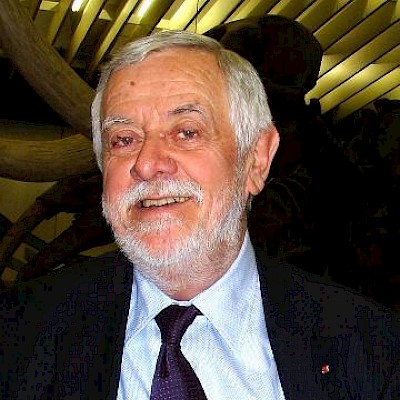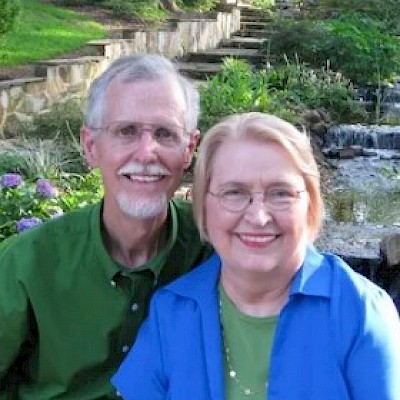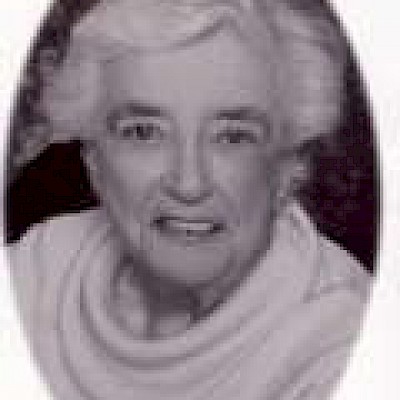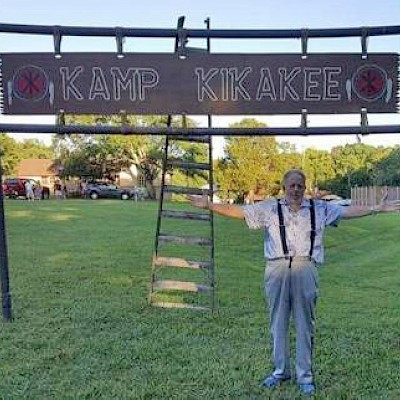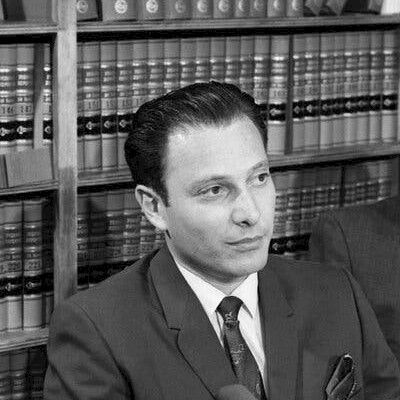
Bernard S. Cohen
With Philip J. Hirschkop, he brought Loving v. Virginia to the Supreme Court, which struck down laws against interracial marriages.
“Dear Sir,” began the letter from Washington that found its way to Bernard S. Cohen at the American Civil Liberties Union in June 1963. “I am writing to you concerning a problem we have. Five years ago my husband and I were married here in the District. We then returned to Virginia to live. My husband is white, and I am part Negro and part Indian.”
The letter, from Mildred Loving, went on to explain that when she and her husband, Richard, returned to Caroline County, Va., to live, they were charged with violating Virginia’s law against mixed-race marriages and exiled from the state.
“It was that simple letter that got us into this not-so-simple case,” Mr. Cohen said later. The not-so-simple case was Loving v. Virginia, which Mr. Cohen and his co-counsel, Philip J. Hirschkop, eventually took to the Supreme Court. In a landmark unanimous ruling in 1967, the court said that laws banning interracial marriage, which were in effect in a number of states, mostly in the South, were unconstitutional.
Mr. Cohen died on Monday at an assisted-living center in Fredericksburg, Va. He was 86.
His son, Bennett, said the cause was Parkinson’s disease.
The Lovings had married in 1958. Five weeks later they were in their home in Caroline County when the county sheriff and two deputies burst in and arrested them. They pleaded guilty to violating the state’s Racial Integrity Act and were sentenced to a year in jail; a judge, Leon M. Bazile, suspended the sentence on the condition that they leave the state and not return together for 25 years.
By 1963 that restriction had begun to chafe, since they had relatives in Virginia and Ms. Loving missed “walking on grass instead of concrete,” as she put it. A relative noticed her distress.
“I was crying the blues all the time, so she said, ‘Why don’t you write Robert Kennedy?’” she recalled in a 1992 interview with The New York Times. “She said that’s what he’s there for.”
Mr. Kennedy was the attorney general at the time, and Ms. Loving did indeed write to him, asking if the national civil rights legislation then being formulated would provide any relief. Mr. Kennedy in turn suggested she write to the A.C.L.U., where Mr. Cohen was a longtime volunteer.
Mr. Cohen acknowledged that he was not particularly well versed in the relevant areas of law. He faced other obstacles as well, not the least of which was Judge Bazile, whose rulings in the case included this oft-cited declaration: “Almighty God created the races white, black, yellow, Malay and red, and He placed them on separate continents, and but for the interference with His arrangement there would be no cause for such marriages.”
He began by filing a motion to set aside the sentence, but Judge Bazile took no action on it for months; the Lovings became concerned that they’d been forgotten. But in 1964 a law professor introduced Mr. Cohen to Mr. Hirschkop, who had only recently graduated from law school but knew civil rights litigation. He helped steer the case onto a path that eventually brought it to the Supreme Court, where, Mr. Hirschkop said in a phone interview, he argued that the Virginia law was a violation of the equal protection clause of the Constitution and Mr. Cohen argued that it was also a due process violation.
“Under our Constitution,” Chief Justice Earl Warren wrote in finding in their favor, “the freedom to marry, or not marry, a person of another race resides with the individual, and cannot be infringed by the State.”
Bernard Sol Cohen was born on Jan. 17, 1934, in Brooklyn. His father, Benjamin, was a furrier, and his mother, Fannie (Davidson) Cohen, was a homemaker.
He grew up in Brooklyn and graduated from the City College of New York in 1956 with a degree in economics. He graduated from Georgetown Law School in 1960.
Bennett Cohen said that, after the Loving case, his father did a lot of work in environmental law. In one case, he said, “the Jewish boy from Brooklyn represented some Christmas tree farmers whose whole crop of Christmas trees was destroyed by acid rain.” That lawsuit, he said, forced nearby power plants to reduce their pollution.
From 1980 to 1996, Mr. Cohen served in the Virginia House of Delegates, where among his accomplishments were measures that restricted smoking — a hard sell in a tobacco state like Virginia. Over the years, the story of the Loving case was told in a 1996 Showtime movie; the 2011 HBO documentary “The Loving Story,” directed by Nancy Buirski; and the 2016 feature film “Loving,” based in part on that documentary.
Richard Loving was killed in a car accident in 1975. Mildred Loving died in 2008.
In addition to his son, Mr. Cohen is survived by his wife of 61 years, Rae (Rose) Cohen; a daughter, Karen Cohen; and three grandchildren.
In 1994, when Mr. Cohen received a distinguished service award from the Virginia Trial Lawyers Association, he gave an acceptance speech in which he lamented that public opinion of lawyers had turned negative, focusing on a few big-dollar civil verdicts and stereotyping anyone seeking redress in the courts as being part of an overly litigious society.
“There seems to be months of trial time available for Pennzoil to sue Texaco and for Polaroid to sue Kodak,” he said, “but cluttering the court with everyday people has become bad form, bad habit, bad business.”
He worried, he said, about the chilling effect.
“In a society of laws, driven by centers of economic and financial power,” he said, “if the courts are not available for the average person to seek justice, then the average person will not receive justice.”
•
Remembering Bernard S. Cohen
Use the form below to make your memorial contribution. PRO will send a handwritten card to the family with your tribute or message included. The information you provide enables us to apply your remembrance gift exactly as you wish.

